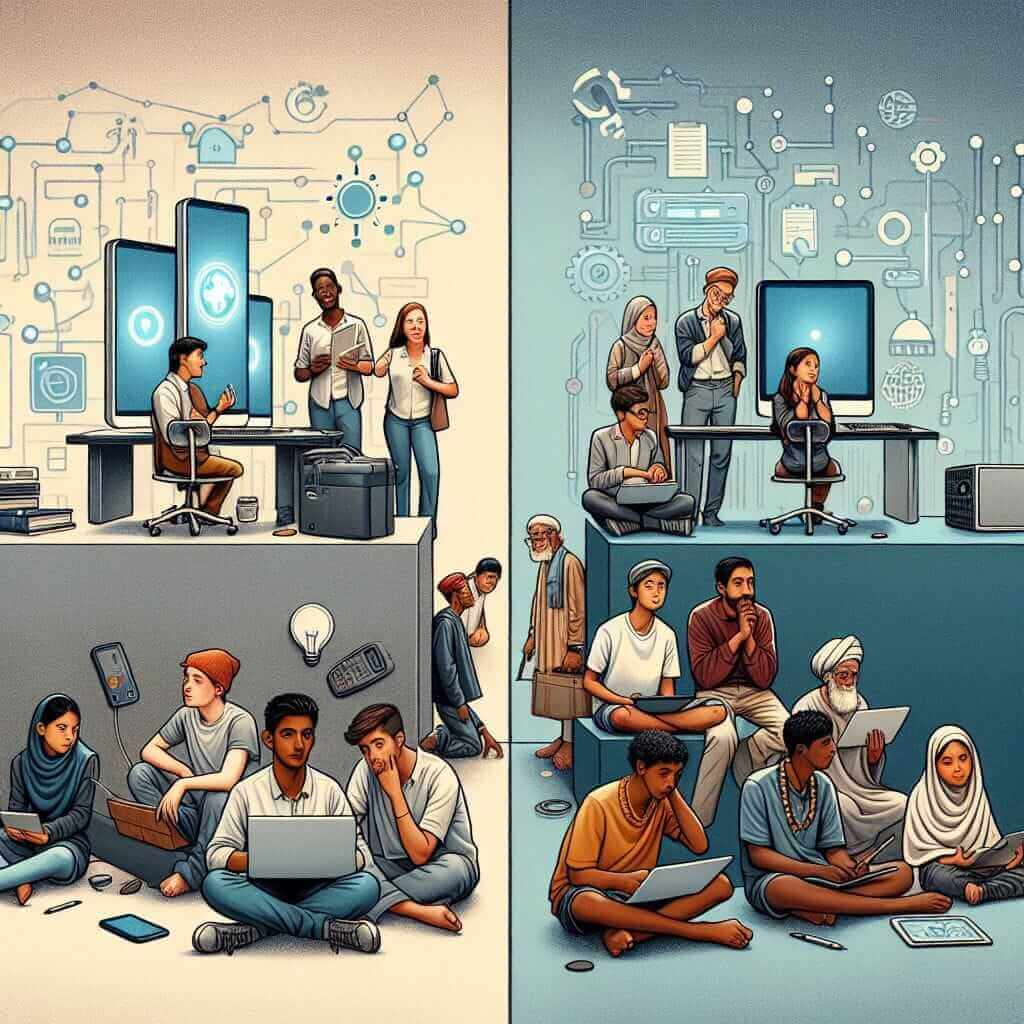The digital divide, referring to the disparity in access to digital technologies and the internet, has profound effects on various facets of life, especially in the realm of education. This essay will delve into how this gap impacts educational opportunities and discuss potential solutions to mitigate its negative consequences.
This topic frequently appears in IELTS Writing Task 2, urging test-takers to analyze its implications on society. Understanding the nuances of this issue is crucial for crafting a well-informed and coherent essay.
IELTS Writing Task 2 Sample Question
“In many countries, there is a significant gap in educational opportunities between those with access to digital technology and those without. What are the effects of this digital divide on education?”
Analysis of the Question
This question requires you to:
- Identify the problem: Acknowledge the existence of a digital divide and its impact on education.
- Analyze the effects: Discuss the specific consequences of this divide on students’ learning experiences and outcomes.
- Provide examples: Support your arguments with relevant examples to illustrate the issue.
Sample Essay
In today’s increasingly digital world, access to technology is no longer a luxury but a necessity, particularly in education. The digital divide, which refers to the unequal distribution of digital resources and skills, has created a chasm in educational opportunities, leaving certain demographics at a significant disadvantage. This essay will discuss the detrimental effects of this divide on education and explore potential solutions to bridge this gap.
One of the most significant consequences of the digital divide is the disparity in access to information and learning resources. Students without reliable internet access or personal devices struggle to keep pace with their digitally-connected peers. They are often limited to outdated textbooks and traditional teaching methods, missing out on the wealth of knowledge and interactive learning experiences available online. For instance, online libraries, educational videos, and interactive simulations provide invaluable learning opportunities that are inaccessible to those on the wrong side of the digital divide.
Moreover, the lack of digital literacy skills further exacerbates the problem. Without the necessary skills to navigate the digital world, students are ill-equipped to thrive in modern learning environments. They face difficulties in conducting research, collaborating on projects, and submitting assignments online, hindering their academic progress and limiting their future prospects.
Addressing the digital divide requires a multi-faceted approach. Governments and educational institutions must prioritize investments in digital infrastructure, ensuring affordable internet access and providing students with the necessary devices. Furthermore, digital literacy programs should be integrated into the curriculum from an early age, equipping students with the skills to navigate the digital landscape confidently.
In conclusion, the digital divide poses a significant threat to equal educational opportunities, hindering students’ access to information, learning resources, and essential digital skills. By investing in digital infrastructure and promoting digital literacy, we can bridge this gap and empower all learners with the tools they need to succeed in the 21st century. (Word Count: 310)

Writing Tips
- Use clear definitions: Define key terms like “digital divide” and “digital literacy” to demonstrate your understanding of the topic.
- Provide specific examples: Use real-world examples to illustrate the impact of the digital divide on education.
- Offer practical solutions: Suggest feasible solutions to address the issue, demonstrating your critical thinking skills.
- Use transition words: Employ transition words like “moreover,” “furthermore,” and “in conclusion” to ensure a smooth flow of ideas.
Vocabulary
- Digital Divide (noun) /ˈdɪdʒɪtəl dɪˈvaɪd/: The gap between those who have access to digital technologies and those who do not.
- Disparity (noun) /dɪˈspærəti/: A great difference.
- Literacy (noun) /ˈlɪtərəsi/: The ability to read and write.
- Infrastructure (noun) /ˈɪnfrəˌstrʌktʃər/: The basic physical and organizational structures and facilities (e.g., buildings, roads, power supplies) needed for the operation of a society or enterprise.
- Exacerbate (verb) /ɪɡˈzæsərbeɪt/: To make a problem, bad situation, or negative feeling worse.
Conclusion
The digital divide is a pressing issue with far-reaching consequences, particularly in the field of education. By understanding its impact and implementing effective solutions, we can work towards creating a more equitable and inclusive learning environment for all.
To further prepare for your IELTS exam, consider practicing essays on related topics such as the role of technology in education or the impact of the internet on learning.